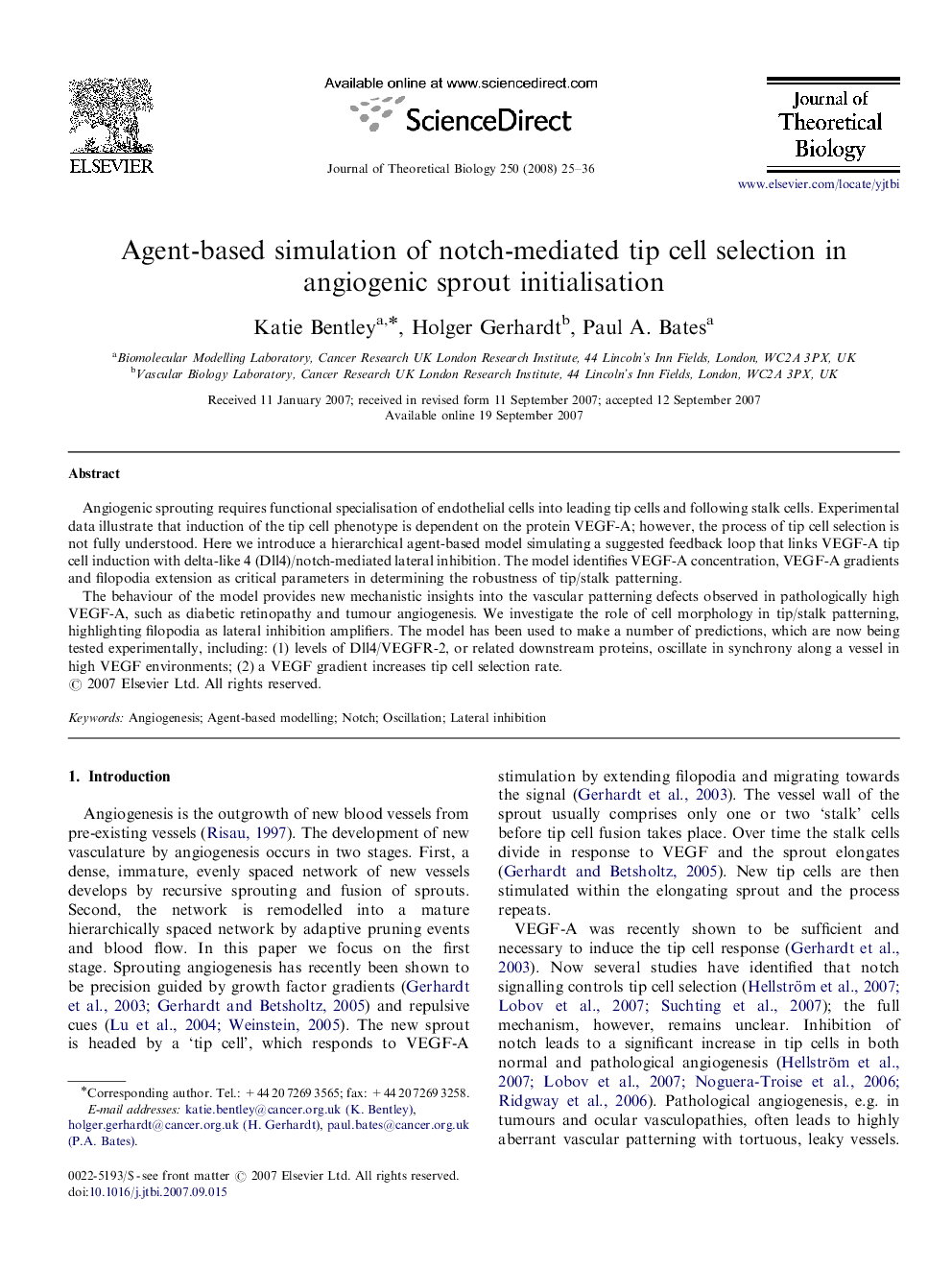| Article ID | Journal | Published Year | Pages | File Type |
|---|---|---|---|---|
| 4498736 | Journal of Theoretical Biology | 2008 | 12 Pages |
Angiogenic sprouting requires functional specialisation of endothelial cells into leading tip cells and following stalk cells. Experimental data illustrate that induction of the tip cell phenotype is dependent on the protein VEGF-A; however, the process of tip cell selection is not fully understood. Here we introduce a hierarchical agent-based model simulating a suggested feedback loop that links VEGF-A tip cell induction with delta-like 4 (Dll4)/notch-mediated lateral inhibition. The model identifies VEGF-A concentration, VEGF-A gradients and filopodia extension as critical parameters in determining the robustness of tip/stalk patterning.The behaviour of the model provides new mechanistic insights into the vascular patterning defects observed in pathologically high VEGF-A, such as diabetic retinopathy and tumour angiogenesis. We investigate the role of cell morphology in tip/stalk patterning, highlighting filopodia as lateral inhibition amplifiers. The model has been used to make a number of predictions, which are now being tested experimentally, including: (1) levels of Dll4/VEGFR-2, or related downstream proteins, oscillate in synchrony along a vessel in high VEGF environments; (2) a VEGF gradient increases tip cell selection rate.
